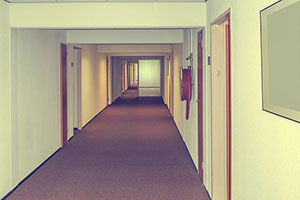An air-conditioning engineer has testified that the portable air conditioning units in a Florida nursing home where twelve elderly patients died of overheating made the conditions worse.
The Deaths
The Rehabilitation Center at Hollywood Hills is a 150-patient facility that lost its main air conditioning system during Hurricane Irma. The system was knocked out on September 10; by September 13, patients began dying and the facility was evacuated. Twelve patients died as the result of overheating. The deaths were ruled homicides. Authorities say that the temperature in the home reached dangerous levels, despite the nine portable air conditioners that were deployed after the main system was knocked out. Florida law requires nursing homes to maintain a temperature of 81 degrees or less.
The Lawsuit
Following the deaths, Governor Rick Scott ordered the state Agency for Health Care Administration (AHCA) to prevent the home from taking on new residents. AHCA also stopped Medicaid patients and eventually pulled the Rehabilitation Center’s license, alleging that the Rehabilitation Center presented a threat to public health, safety, or welfare and that “deficient practices exist presently and will more likely than not continue to exist if the agency does not act promptly.” The Rehabilitation Center closed its facility and laid off 245 employees.
The nursing home filed a lawsuit against the state, seeking injunctions against AHCA’s orders. The Rehabilitation Center claimed, “With the stroke of a pen, AHCA (the Agency for Health Care Administration) has effectively shut down Hollywood Hills as a nursing home provider in Broward County. . . . These illegal and improper administrative orders took effect immediately and without any opportunity for the facility to defend itself against unfounded allegations.”
The state hired William Crawford, an air-conditioning engineer, as an expert witness. Crawford offered testimony in the form of a deposition before the Rehabilitation Center’s attorney, Geoff Smith. Crawford testified that the portable air conditioners used by the home were insufficient and that they only produced about 10 percent of the cooling capacity of the home’s central air conditioner that was knocked out by the storm.
Crawford testified that the air conditioners were not properly vented. Air conditioners function by taking hot air from an enclosed space and moving it outside. The Rehabilitation Center’s first floor portable air conditioners vented the hot air to the ceiling, which meant that the first floor’s hot air went to the second floor and back to the first floor. Crawford testified that the air temperature between the first-floor ceiling and second floor floor ranged somewhere between 95 degrees and 110 degrees.
Crawford said that the improper ventilation of the air conditioners caused the temperatures within the building to increase. He said, “I can say with certainty it was above 81” in most of the facility. He conceded that it was possible that it was cooler within the 9 feet of the five portable units that were on the first floor; however, he asserted that “There was no way they maintained 81 degrees on the second floor.”




